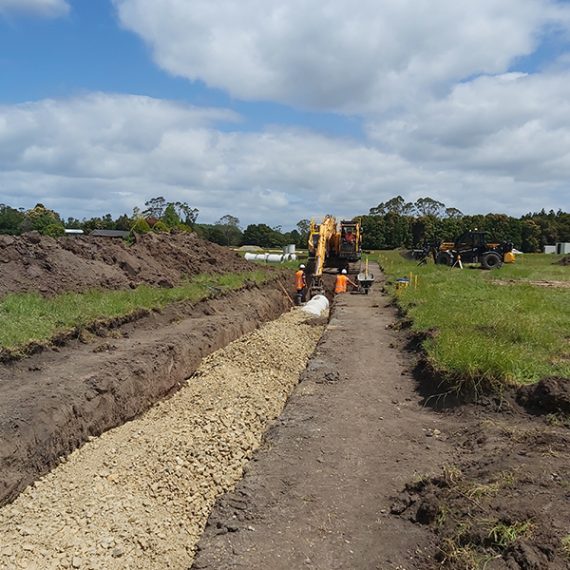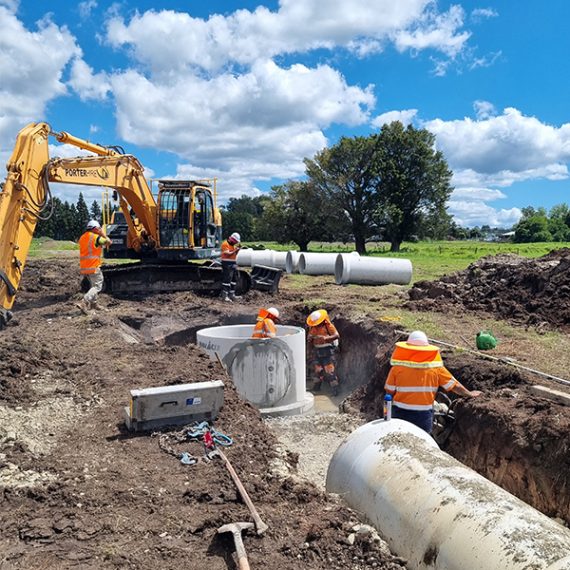Te Puāwaitanga
haigh-workman-project-te-puawaitanga-sports-3

haigh-workman-project-te-puawaitanga-sports-2

haigh-workman-project-te-puawaitanga-sports-1

About This Project
Far North District Council multi-code sports fields and facilities in Waipapa.
Ultimately, community development is what shapes and drives us at Haigh Workman. Sporting infrastructure is still relatively sparse in the Mid North, despite the burgeoning population, and Te Puāwaitanga is a land development project with community at its core. So we relished the opportunity to help carve this multi-code sporting facility out of some raw paddocks in a Waipapa floodplain.
Haigh Workman undertook all engineering on this complex site; a floodplain with soft alluvial soils. In many ways a site of this nature is ideally suited for sports fields. However, it did present significant infrastructure engineering challenges – not least ensuring that playing surfaces are elevated and that drainage is sufficient to keep the site dry and mitigate against the risk of flooding.
We conducted a pre-purchase geotech investigation of the site for our client, Far North District Council. This revealed deep soft soils with an extremely shallow water table. Significant ground improvement would be required for building on a site of this nature, requiring a lot of attention to detail.
The shallow water table meant that earthworks needed to be minimised in order not to ‘fight the ground’. We were reliant on following the existing levels to a significant degree – we didn’t want to do more than break the top-soil.
Added complexity came in the form of sports-field placement. The fact that this is a multi-code facility meant that the requirements of differing codes played a significant part in deciding on the size and orientation of the sporting surfaces – and the complex and extensive stormwater management facilities had to be worked around these.
All stormwater pipes had to be placed below the water table in extremely soft soil. Our client’s focus on social, or ‘broader outcomes’, procurement for this project dictated that there were many local, smaller contractors undertaking earthworks and associated site preparation. This focus on local procurement meant we were working with businesses that hadn’t yet been exposed to this level of site complexity, so significant amounts of liaison and oversight were required on our part.
Contractor engagement was an important part of our role on this project. With particular emphasis on ensuring a coordinated approach – minimising the potential for either duplicated work or gaps in the work-stream.
Another requirement for sensitive account management and good people-management and community engagement skills lay in the fact that we and the project managers were working with a variety of (sometimes competing) interests. These took the form of different community groups and sporting codes – all with their own requirements of this Council-led community initiative.
Roading and traffic engineering was an important part of this project. The entrance to Te Puāwaitanga is off a particularly busy, and previously extremely narrow, section of State Highway 10. This involved significant planning and liaison with Waka Kotahi/New Zealand Transport Agency. The design and development of car-parking for the facility was also part of our brief.
The community has some ambitious plans for this facility. Plans that extend far beyond the core facilities that will be in place by the time the first phase of development is complete. We’re delighted to know that as Te Puāwaitanga grows it will do so on foundations, and using infrastructure, that we were lucky enough to have been involved in creating.
< BACK TO PROJECTS
Date
2020-2024

